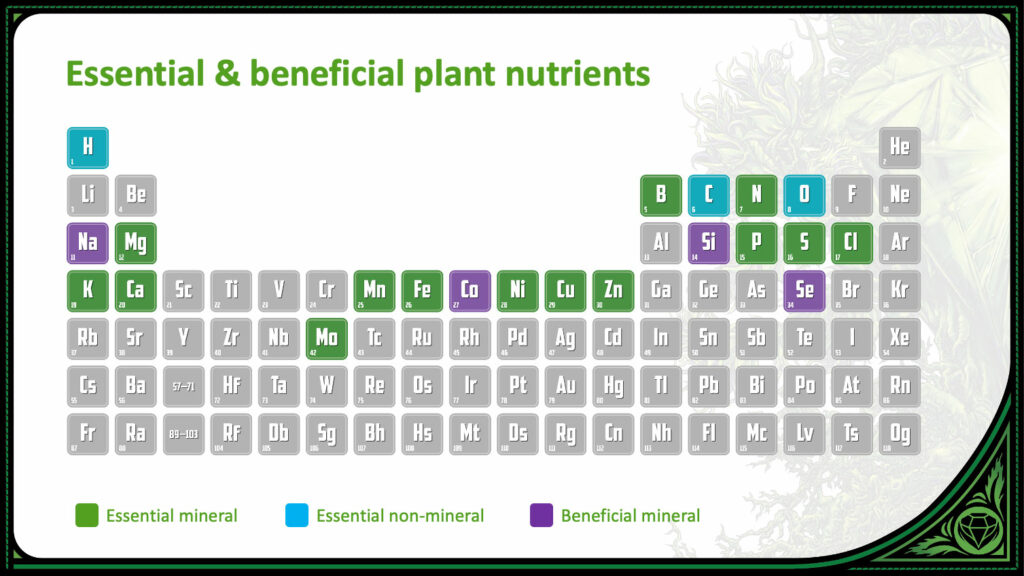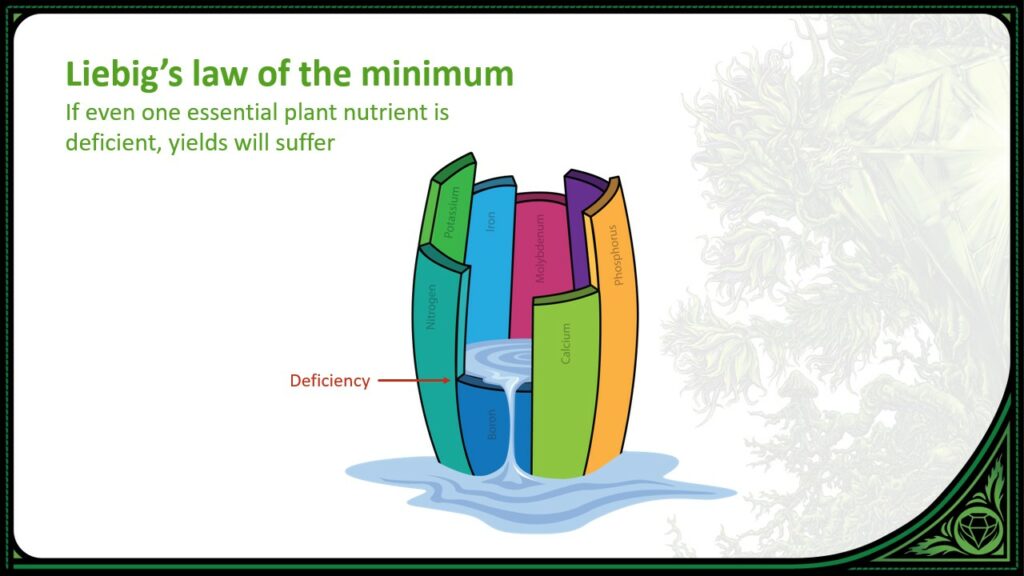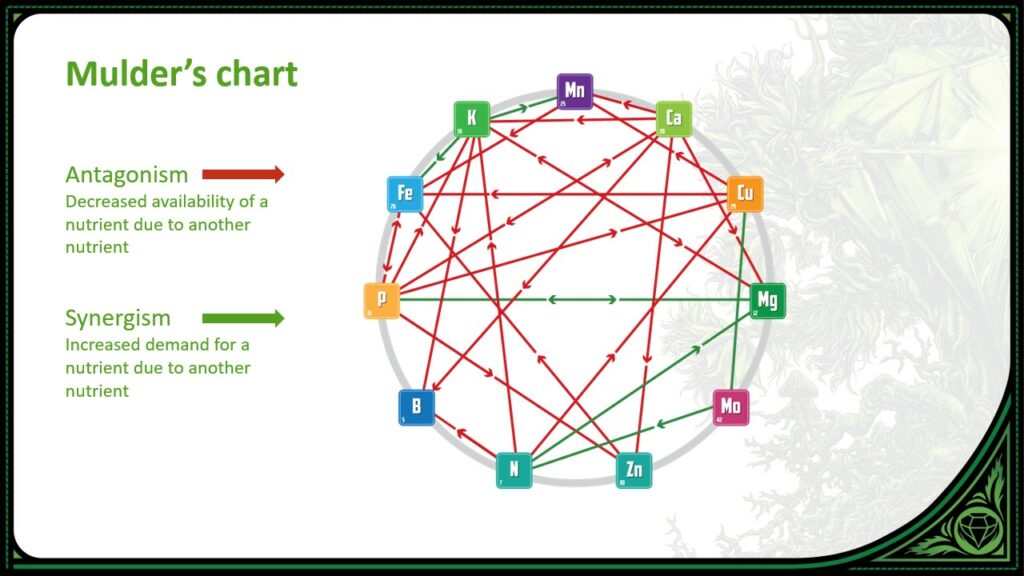
- January 31, 2024
- 0 comments
- 467 Views
Basic blends don’t have what it takes
A “basic blend” is typically a simple NPK fertilizer, providing nitrogen, phosphorus, and potassium, and little or nothing else. They often lack or contain insufficient concentrations of secondary macronutrients and micronutrients, or they are present but in imbalanced ratios. Nor do they usually contain beneficial plant nutrients (i.e., those that aren’t essential, but still provide plant benefits), let alone helpful organic compounds. And, even when a basic blend contains ingredients that go beyond the generic NPK, they are not evenly distributed within the blend or readily available for uptake.
The result? Nothing to shout about—except perhaps in frustration: inconsistent, low-quality harvests marred by compromised fragrance, flavor, color, essential-oil content, and overall potency.

Why the right concentrations and ratios matter
A basic blend might be just the ticket for a home garden plot—for example, if you’re growing tomatoes for the family table. Soil-grown plants absorb many of the nutrients they need from naturally occurring minerals. In a hydroponic garden, however, every essential nutrient must be provided by a fertilizer or charged substrate.
In addition to ensuring that every essential nutrient is provided in the right concentration to prevent deficiencies in accordance with Liebig’s Law of the Minimum, and that no nutrients are provided in too high a concentration to burn the plant, a phenomenon called nutrient toxicity, hydroponic nutrients must be formulated in the right ratios:
- Some nutrients are complementary or synergistic. If you apply more of one, the plant needs more of another—and will take up more of it.
- Other nutrients are antagonistic. If you increase the supply of a nutrient, the plant will take up less of another—perhaps too much less, causing a deficiency.

For example, in a premium liquid nutrient line, the ratio of phosphorus to other nutrients is balanced to ensure that phosphorus doesn’t edge out any of the other nutrients the plant needs, locking them out and causing deficiencies. By contrast, many dry blends are nothing more than repackaged, relabeled monopotassium phosphate, abbreviated MKP, which provides more phosphorus than needed in hydroponics.
See Mulder’s chart below, which illustrates which nutrients are antagonistic or complementary (synergistic) to each other.

Finally, the raw materials used to make fertilizer can also play a role in terms of quality.
Beyond the essentials: beneficial nutrients and compounds
Premium fertilizer lines also incorporate a range of beneficial or organic compounds that contribute to plant development, which basic blends often overlook. They are particularly important for improving crop quality—not only yields—much in the same way that dietary supplements can improve human fitness or health above and beyond the essential nutrients provided by food.
For plants, these include:
- Silicon, a beneficial nutrient that keeps stalks sturdy and strong—and crops resilient.
- Amino acids, which serve as natural chelators for better nutrient uptake and provide the building blocks of proteins for better plant structure.
- PGPRs (plant-growth promoting rhizobacteria), which increase nutrient uptake and help defend the roots from pathogens.
- Vitamin B1 (thiamine), which boosts plant immune response and supports root and shoot growth.
- Biocatalysts, such as auxins and cytokinins, which drive growth and flowering.
The Emerald Harvest Team